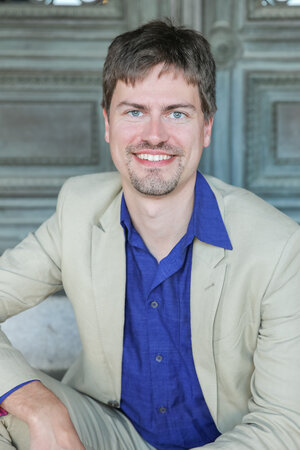Old stem cells can be rejuvenated with young blood
By changing the 'aging gene signature' in mice, a large international consortium including researchers from Aarhus University have succeeded in making aging stem cells younger with young blood. And this is important knowledge, because once we understand how we age at the cellular and molecular level, we can develop treatments that slow down our old age and delay or even prevent diseases that belong to old age.

Facelift, eyelid surgery and laser treatment for wrinkles. The possibilities of rejuvenating our exterior are many, but it is an entirely different matter when we talk about putting the real old age on pause. Now a new research result from Aarhus University shows that young blood can make you young again. At least in the laboratory.
In a large international research project, Antoine de Morree from the Department of Biomedicine has added young blood to older mice, with profound changes to all organs that were studied, he says.
"We now know how different organs change with age. The experiment provides the first systematic insight into how organs change with age. At the same time, the initial results suggest that a treatment with younger blood can roll back the aging process by changing the cells of the organs,” he says.
The other youth
The researchers found that young blood can roll back the aging process, among other things by restoring the so-called mitochondria, which are the cells' energy powerhouses. This means that we can potentially become better at resisting age-related diseases.
"This study is the first to look at all cells at the same time, and we see that stem cells and fat cells in particular respond to young blood. Stem cells like those in the bone marrow change dramatically in response to young blood, and their gene expression, ie the process of how a gene works in a cell, looks more like young stem cells than old stem cells - they rejuvenate,” explains Antoine de Morree.
For decades, we have known that certain interventions, such as exercise, make an older body healthier and less likely to get diseases. We just do not understand exactly how it works. One intervention that has been shown to be effective in reversing the signs of aging is to supplement young blood.
When old mice get young blood so they temporarily form a joint circuit, the muscles of the old mouse become better at healing injuries, while the muscles of the young mouse become worse. Younger organs may mean fewer diseases in the elderly. If we are able to slow down or reverse the biological aging, we can reduce the risk of disease, delay and possibly also prevent diseases that are more frequent the older we get.
“Aging is an underlying process for all biology in health and disease, therefore the study is important for all areas of medical biology. One area of particular interest is stem cell biology. As we get older, the stem cells stop working. If we can understand exactly how aging alters stem cells, and how interventions like exercise and young blood can restore their function, we can develop treatments to improve their function in old age,” explains Antoine de Morree.
The results are published in Nature.
Behind the result
- The researchers used the technique of parabiosis, in which they combined two living organisms (mice) that are surgically connected to develop a single, common physiological system.
- The study has been created in an international collaboration.
- The scientific article can be read in Nature: https://www.nature.com/articles/s41586-022-04461-2
Contact
Antoine de Morree
Aarhus University, Department of Biomedicine
demorree@biomed.au.dk